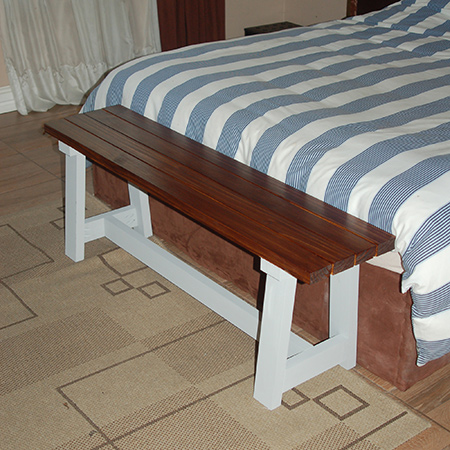Should I Buy a Biscuit Joiner or Kreg Pocket Hole Jig
When wanting to add to your tool collection, there is always the question of should you buy a Biscuit Joiner or a Kreg Pocket Hole Jig, or even both of these tools?
15/06/2020
As a DIY enthusiast and someone who also dabbles in woodworking, I have both a biscuit joiner and a pocket hole jig as part of my tool collection. I use both of these tools for various projects and wouldn't want to be without either. But if you are starting out and building up your tool collection, the questions arises as to whether one is better than the other or are both of these tools a good investment.
When hosting our DIY-Divas.co.za workshops, we do a demonstration on both a Tork Craft Biscuit Joiner and a Kreg Pocket Hole Jig system. At these workshops, we are often asked what the difference is between these two tools, if one is better than the other and which is the best one to buy. While these two different tools have a couple of similar factors, they are completely different tools.
Tork Craft Biscuit Joiner
As with a pocket hole jig, a biscuit joiner lets you join two workpieces together without any visible screws. While you can hide or plug the screw holes with a pocket hole jig, there are no screws involved when using a biscuit joiner. This tool cuts a slot in the mating pieces, into which a biscuit is inserted with wood glue and the biscuit absorbs the glue and expands, effectively locking the two pieces together.
While many may say that the joint is not a strong one, when used for gluing or laminating flat planks or boards together to create say, for example, a table top, the glued joint is very strong and eliminates the need for visible screws.
With the introduction of the Tork Craft Biscuit Joiner a few years back, the average DIY enthusiast and beginner woodworker now has access to a tool that used to cost upwards of R5000 for a quality brand. The Tork Craft Biscuit Joiner is priced from around R1 600, making it a reasonably priced tool to consider investing in.
- When would you use a Biscuit Joiner?
A biscuit joiner is a versatile tool that can be used for all types of timber or board projects, particularly where you don't want to use screws or have screws visible. I like to use my biscuit joiner when making picture frames and have also used it to join kitchen cabinet door frames. But there are many other uses for a biscuit joiner, especially where the joints do not have to bear any pressure.
A biscuit joiner is ideal for assembling frames for cabinet doors where visible screws or plugs would spoil the finished look.
A couple of projects that came out exceptionally well using my biscuit joiner was a floating shelf unit and my laptop stand. Both of these projects used no screws, so new visible screw heads, and were quick and easy to assemble.
This Floating Wall Shelf (above) and 3-in-1 Laptop Stand were assembled without the need for screws. With basic biscuit joinery, it was a quick and easy task to assemble and finish these projects.
- Is a Biscuit Joiner worth the cost?
As concerns the price of around R1600 for a biscuit joiner, if you want to create projects without screws, such as picture or mirror frames, or where you need to laminate planks or boards together as I did with my pine dining table project, then a biscuit joiner is a worthwhile investment.
Kreg Pocket Hole Jig
For this article and comparison against a biscuit joiner, I am only going to refer to the Kreg K4 Master Jig System. This is the one that I invested in and have used on many, many occasions. This tool retails at around R2 400, so while more expensive, not that much more expensive than the Tork Craft Biscuit Joiner.
Very popular with the woodworking community, a pocket-hole jig is great if you like to use wood for most of your projects. Using a pocket-hole jig lets you drill precise pocket-holes where the screws can be hidden behind, underneath or on top. You can also buy ready-cut plugs or a plug cutter to make your own plugs to fit and hide screws. This is ideal if you plan of staining a project and don't want to use wood filler or caps to hide screws since the wood plugs easily accept a stain, while wood filler does not.
The Kreg Pocket Hole jig offers a strong way to join materials without any visible screws.
Using a Kreg Pocket Hole Jig is a simple process and you very quickly get the hang of it, allowing you even more versatility when it comes to joinery for your woodworking projects.
Not just for joining wood projects, a Kreg Pocket Hole Jig lets you assemble using all types of timber and board materials. Any project can be made using a pocket hole jig, like this rustic slat bench shown above, or this shoe organizer or an outdoor storage bench like the one shown below.
Conclusion
Both the above tools might offer an invisible way to join materials, but both have their individual uses. If you are trying to decide which one to buy, think about what you need it for; what type of projects you want to make and the materials you will be using. As in my case, you might find that you need - or want - to add both of these tools to your tool collection and my advice to you is to wait until they become available on special offer and grab them both!







